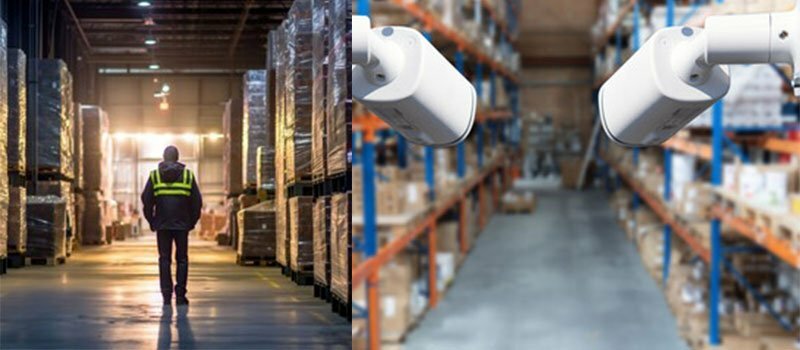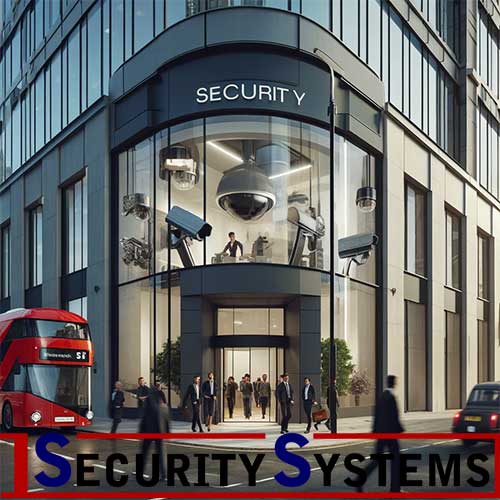The Procedures and Key Benefits of CCTV Cameras Installation for Warehouses
Warehousing forms the backbone of many businesses within the United Kingdom. With the increase in online shopping and global trade, warehouses store millions of pounds worth of goods every day. However, the potential for theft, damage, or other security issues remains a pertinent concern for warehouse owners and operators. This has given rise to the widespread adoption of Closed-Circuit Television (CCTV) cameras within the warehousing sector. Below, we explore the procedures for installing CCTV cameras in warehouses and discuss the multitude of benefits they bring.
Procedure for Installing CCTV Cameras in Warehouses
- Assessment and Survey: The first step involves a thorough survey of the warehouse premises to identify key areas that require monitoring. This includes entry and exit points, high-value storage areas, loading docks, and any potential blind spots.
- Choosing the Right Cameras: There are various types of CCTV cameras available, each with its unique features. Dome cameras, for example, are typically used indoors due to their discreet appearance, while bullet cameras, with their longer range, can be perfect for monitoring large warehouse interiors or external perimeters.
- Positioning the Cameras: Proper positioning is crucial for ensuring that all critical areas are under surveillance. Cameras should be mounted at a height where they can’t be easily tampered with but should also be accessible for maintenance purposes.
- Installing Recording Devices: All footage from the CCTV cameras will be stored in Digital Video Recorders (DVRs) or Network Video Recorders (NVRs). It’s essential to ensure they have ample storage capacity and are stored in a secure location to prevent tampering.
- Cabling and Connectivity: Depending on whether the cameras are wired or wireless, the appropriate cabling and network infrastructure will be put in place. It’s vital to ensure that there are no connectivity issues, especially for IP cameras that rely on the internet.
- Monitoring and Maintenance: Once the installation is complete, the system should be continuously monitored. Regular maintenance checks, software updates, and system backups should also be conducted to ensure that the system operates optimally.
Key Benefits of Installing CCTV Cameras in Warehouses
- Enhanced Security: The most obvious benefit is improved security. CCTV cameras act as a deterrent to potential thieves, vandals, or other malicious actors. In the event of any incident, the footage can serve as evidence, aiding law enforcement in their investigations.
- Operational Efficiency: Warehouses are bustling places with goods constantly moving in and out. CCTV cameras can help managers monitor the flow of products, ensuring that operations run smoothly. They can identify bottlenecks or inefficiencies in real-time, allowing for quick corrective action.
- Safety Compliance: Warehouses need to adhere to stringent safety standards. CCTV cameras help ensure that safety protocols are followed, such as the proper use of equipment, adherence to no-entry zones, and ensuring that pathways remain unobstructed.
- Reduction in Insurance Costs: Many insurance companies offer reduced premiums for warehouses equipped with a professional CCTV system. This is because the presence of cameras decreases the risk associated with theft or damage, translating to potential savings for warehouse operators.
- Remote Monitoring: Modern CCTV systems come with remote monitoring capabilities. This means that even if the warehouse manager or security personnel are not on-site, they can still keep an eye on the premises from their computer or mobile device.
- Dispute Resolution: Warehouses often deal with large quantities of goods, and sometimes discrepancies arise, be it with suppliers, customers, or internal staff. CCTV footage can help resolve such disputes by providing a clear account of goods received, dispatched, or handled within the warehouse.
- Enhanced Employee Productivity: Knowing that they are being monitored, employees are more likely to perform their tasks diligently. This not only improves productivity but also ensures that employees adhere to best practices consistently.
In conclusion, the installation of CCTV cameras in warehouses within the United Kingdom is not just a matter of security; it’s an investment in operational efficiency, safety compliance, and overall business integrity. While the initial outlay for a comprehensive CCTV system may seem substantial, the long-term benefits – in terms of cost savings, improved operations, and peace of mind – make it an indispensable tool for modern warehousing operations.
CALL US: 020 3479 4007
Talk directly with the installer and get your service fully completed within a day!




